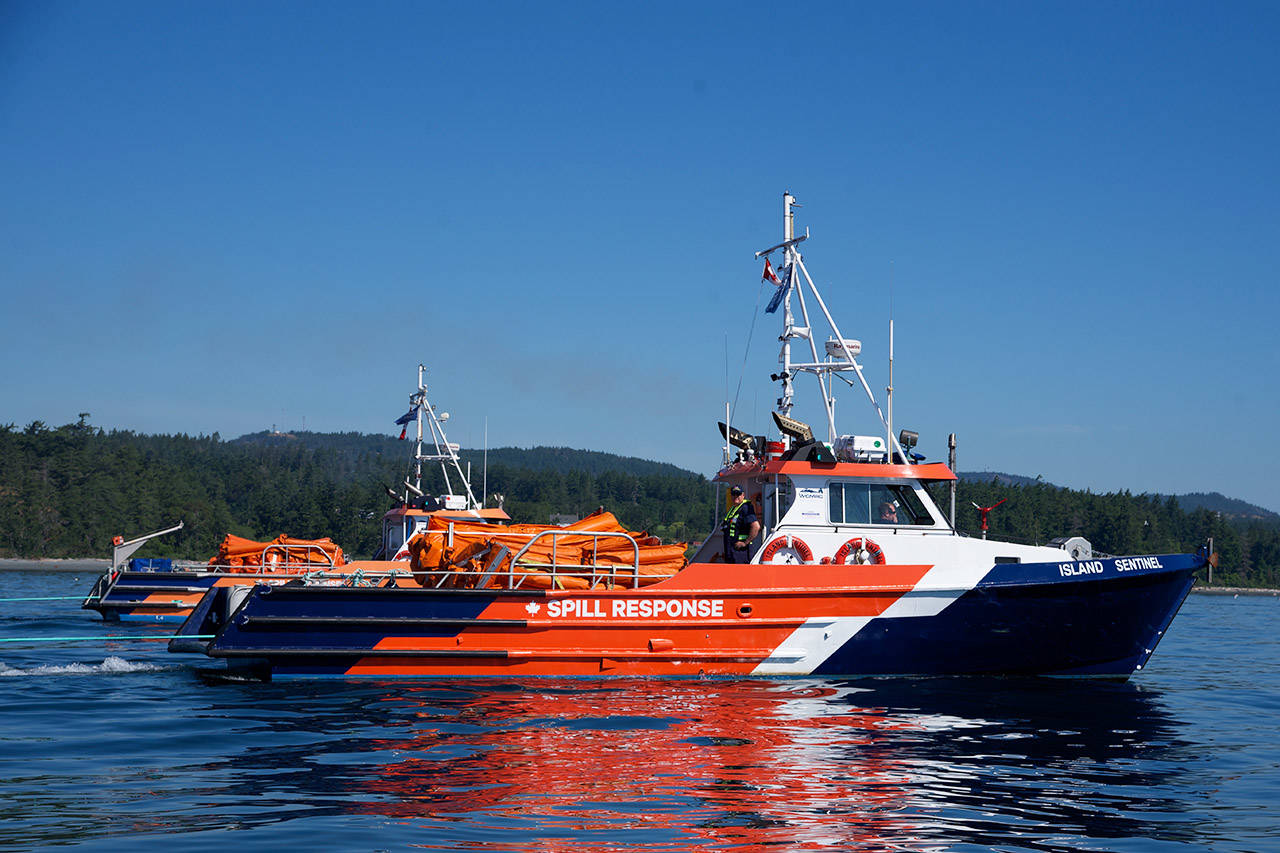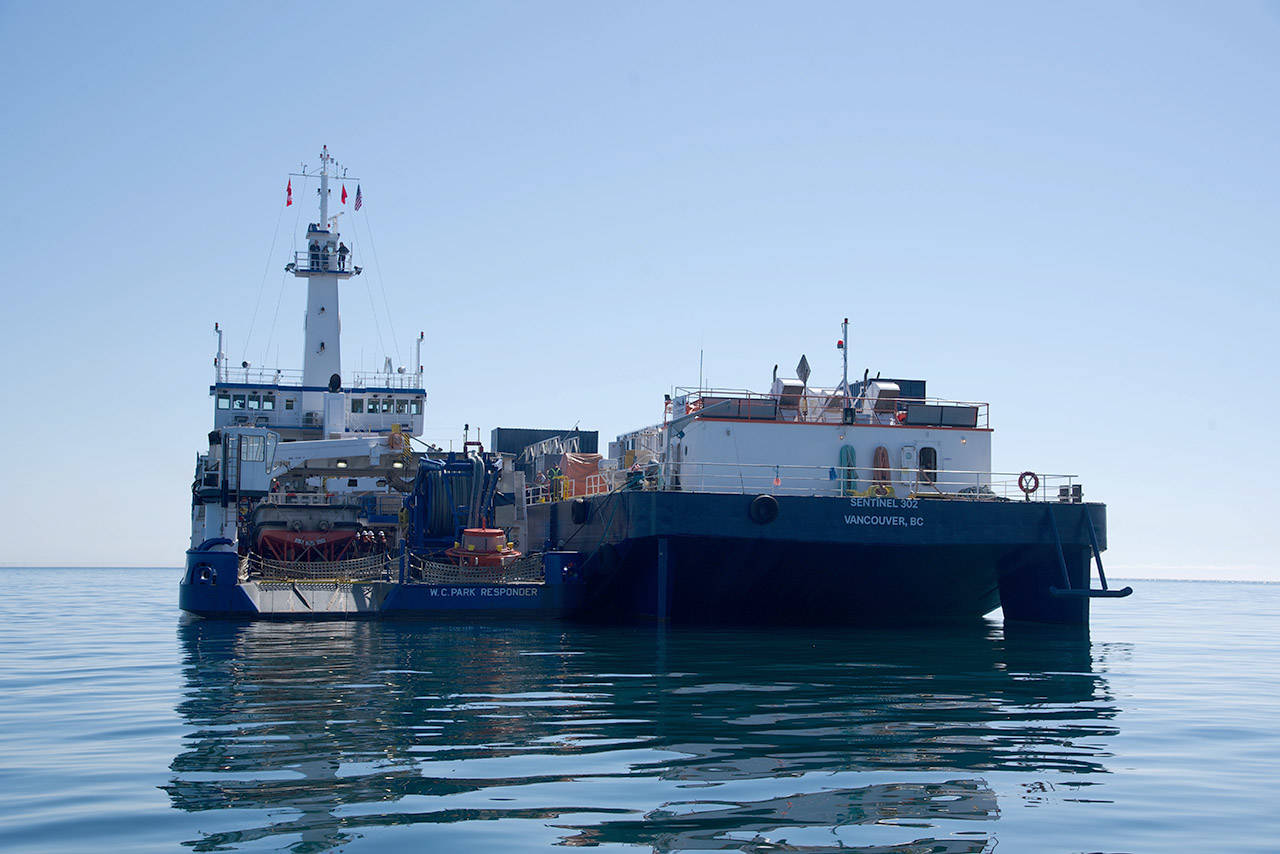The Canadian and U.S. Coast Guards partnered with international environmental response groups to participate in an on-water oil spill response drill on Thursday morning.
Twenty vessels were on the water while helicopters circled overhead for a simulated oil spill during a two-day, cross-border drill known as the Canada-United States Joint Marine Pollution Contingency Plan, Pacific Annex (CANUSPAC Annex). The contingency drill had three goals: to contain, recover and store oil; to practice communications protocols, and to smooth out border-crossing processes for ships and equipment.
The first day of the drill took place on Wednesday on the American side of the water with 160 participants involved; on Thursday the same drills were run on the Canadian side of the boarder.
READ MORE:Canadian, U.S. Coast Guard to practice oil spill response in Victoria waters
“We know that oil has no boundaries in terms of borders, so the oil could move on either side,” said Jeff Bray, deputy superintendent for the Canadian Coast Guard’s environmental response, western region. “It’s best not to have two different task forces so we want to work as one.”
After the drills, the teams will debrief and assess and changes required for future drills. The CANUSPAC Annex holds tests every two years, though often these tests can be on paper. This was the first on-water exercise in several years.
The @CoastGuardCAN and @USCG are practicing their first on-water oil spill response drill in several years. 20 vessels on the water this morning in the Strait of Juan de Fuca @VictoriaNews #yyj pic.twitter.com/feyznbViIj
— Nicole Crescenzi (@NicoleCrescenzi) May 23, 2019
On either side of the border, third-party environmental response groups are primarily responsible for the cleanup, while the coast guards are responsible for overseeing that all tasks are complete.
On the Canadian side, the Western Canada Marine Response Corporation (WCMRC) was out releasing booms to contain oil, activating skimmers to collect the pollutant and working with its American counterpart, the Marine Spill Response Corporation, to transfer oil between storage vessels.
Legally, the corporations need to be able to clean up 10,000 tonnes of oil in 10 days on the water, and afterwards clean up 500 metres of beach per day.
ALSO READ: Trans Mountain’s first oil spill response ship ready
While the drills happen regularly, the actual implementation of the forces for real scenarios do not.
“Thankfully with all the prevention measures in place with Canada’s regime there aren’t many oil spills,” Brey said. “It’s very rare that we actually have to get out there and clean oil spills in this situation.”
The WCMRC reported that the last largest oil spill on Canadian waters recently was in 2007 in Burnaby after a pipeline ruptured.
Send a Tweet: @NicoleCrescenzi
Like us on Facebook




